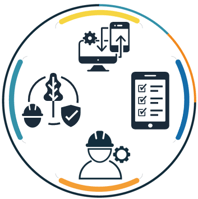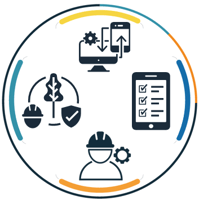I had the pleasure a few weeks ago of attending the 2019 Mobile Work Management Deployment and Implementation conference, hosted by the Electric Power Research Institute (EPRI) in Charlotte, NC. EPRI has done some seminal work on the topic, with a focus on the challenges that nuclear generating stations face when rolling out mobile work management solutions.
Although nuclear might seem like a niche industry use case with very specific requirements, its challenges are actually recognizable to many large organizations:
- Highly regulated environment
- Tight operating margins
- Conservative workforce, some resistant to change
- Safety and reliability of paramount importance
Even after building an effective business case for moving to mobile, with these kinds of headwinds it’s important to keep improving the program in order to fully take advantage of the new capabilities. To help with this, EPRI has provided its member utilities with an excellent set of indicators to measure and ultimately improve the effectiveness of their mobile work program.
The specific indicators may not apply to your industry, but the general categories they fall in are highly relevant:
Execution
- How long does it take workers to compile and load the desired work documents on the mobile device?
- How long does it take to perform the work versus how much time was planned?
- How long does it take to submit and review completed work performed with mobile?
- What percentage of tasks failed closeout review, and how long did that resolution take?
Utilization
- What percentage of work is completed digitally versus on paper?
- What percentage of workers have access to a mobile device?
Reliability
- What is the latency of transmitting data to/from the mobile device?
- What is the frequency of application crashes?
- How frequently are data loss events experienced?
Of these indicators, one stands head and shoulders above the others – you must employ a zero-tolerance attitude towards any kind of data loss event. Unless a device is physically destroyed, users will lose confidence in the technology and push to move back to paper if they suspect that the work they do has any chance of being erased or lost. Proactively protecting against this is a critical part of your implementation strategy.
Beyond that, the remaining indicators will help you identify weaknesses, or at least areas for improvement, so you can make the most of your mobile adoption. After all, you can only improve what you measure.
Good luck!







